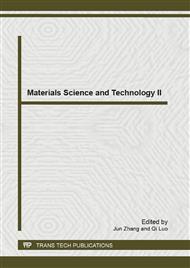[1]
R. K. Mongia and P. Bhartia, "Dielectric resonator antennas—A review and general design relations for resonant frequency and bandwidth, "Int. J.Microw. Millimetre-Wave Comput.-Aided Eng., vol. 4, no. 3, p.230–247, 1994.
DOI: 10.1002/mmce.4570040304
Google Scholar
[2]
S. G. O 'Keefe and S. P. Kingsley, "Radiation efficiency of liquid di-electric resonator antennas, " in Nat. Radio Sci. Meet., URSI, Boulder, CO, Jan. 2000, p.133
Google Scholar
[3]
H. Fayad and P. Record, "Broadband liquid antennas, " Electron. Lett. ,vol. 42, no. 3, p.133 –134, Feb. 2006.
Google Scholar
[4]
Steven G O,simon P K.Tunability of liquid dielectric resonator antenna [J].IEEE Antenna and Wireless Propagation letters,2007,31(6):533-53
Google Scholar
[5]
H. Fayad and P. Record, "Wideband saline-water antenna," Wideband Multi-Band Antennas Arrays, p.197 –201, Sep. 2005.
DOI: 10.1049/ic:20050312
Google Scholar
[6]
AnyaTraille, Li Yang , AminRida , and Manos M.Tentzeris, "A NovelLiquid Antennafor WearableBio-monitoring Applications"
Google Scholar
[7]
Trueman, C. W. and S. J. Kubina, "Verifying wire-grid model integrity with program 'Check'," ACES Winter, Vol. 5, No. 2,1990.7.
Google Scholar
[8]
Burke, G. J. and A. J. Poggio, Numerical Electromagnetics Code(NEC) — method of moments," Rep. UCID 18834, Lawrence Livermore Laboratory, CA, 1981.
Google Scholar
[9]
Miller, E. K. and F. J. Dearick, Some Computational Aspects of Thin-wire Modeling. Numerical and Asymptotic Techniques in Elecctromagnetics , 89–127, Springer-Verlag, New York, 1975.
Google Scholar
[10]
Taylor, D. and P. Loschialpo, "Imaging of helical surface wave modes in the near field,"Journal of Electromagnetic Waves and Appl., Vol. 17, No. 11, 1593–1604, 2003.
DOI: 10.1163/156939303772681451
Google Scholar


